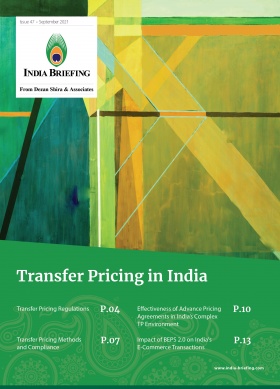India’s Northeast Region: Scope for Investment in Fast-Developing States
India’s Northeast Region (NER) is among the poorer and less developed parts of the nation but provides investors with a strategic landscape and various greenfield opportunities. A key appeal of the states in this region is the abundance of raw materials, cheaper labor costs, and access to Southeast Asian markets. In this article, we take a closer look at investment opportunities in the NER and how the region is transitioning from a primarily agrarian economy.
India’s Northeast Region (NER) is the easternmost region of the country and represents both a geographic and political administrative division. It comprises of eight states – Arunachal Pradesh, Assam, Manipur, Meghalaya, Mizoram, Nagaland, Tripura, and Sikkim.
These eight states account for an area of 262,230 square kilometers (101,250 sq mi) –just larger than the UK – and almost eight percent of that of India. Interestingly, this region shares 99 percent of its borders with other countries – Bangladesh, Bhutan, Chinese Tibet, and Myanmar – and only one percent with another Indian state – West Bengal.
The region is also strategically important for India’s economic growth. The Look East policy emerged as an important foreign policy initiative for New Delhi in the post-Cold War period – connecting Northeast India to East Asia and ASEAN. Launched in 1991 by the Narasimha Rao government, the policy was created with the aim of developing political contacts, increasing economic integration, and forging security cooperation with countries of Southeast Asia. In 2014, the Narendra Modi government launched a new iteration, the Act East Policy, to promote economic cooperation, enhance connectivity and cultural ties, and develop strategic relationships with countries in the Indo-Pacific region through continuous engagement at bilateral, regional, and multilateral levels. Major ongoing projects in the region under this policy include the Kaladan Multi Modal Transit Transport Project, the India-Myanmar-Thailand Trilateral Highway Project, and Port Connectivity with Thailand and Indonesia.
The NER might be one of the less developed regions of India, but it possesses huge potential in several industries and sectors. With peace established in the region, the government is also putting increasing emphasis on encouraging growth in the NER.
In the last two decades, economic growth in the NER has been impressive, with an annual growth rate in excess of 8 percent. The movement towards more productive industries plays a large part in this.
Growth industries in Northeast India
Petrochemicals
Assam has the highest recoverable reserves of crude oil and natural gas in India. The Ministry of Petroleum and Natural Gas’s (MoPNG) Hydrocarbon Vision 2030 aims to ramp up oil and gas production in the NER with the goal of contributing to overall socio-economic development.
Assam has more than 100 oil fields and 200 million metric tons of crude oil reserves. Today, Assam accounts for 15 percent of India’s crude output and 50 percent of the country’s entire onshore production of oil and natural gas. The resource has the capacity to enhance economic transformation across the state.
However, the discovery of hydrocarbon resources has also engendered intra-state squabbling over resource rights. The Oil and Natural Gas Corporation (ONGC) has discovered vast reserves of hydrocarbon deposits in parts of the sensitive Kolasib district on Assam’s borders. It is speculated that up to 5,52,674 cubic feet of gas could be extracted from the Meidum exploration site in Kolasib, Mizoram.
There are four ONGC blocks – all of which carry tremendous potential – that fall within disputed areas along the Assam-Nagaland border, also known as the Disputed Area Belt (DAB).
Despite these challenges, the industry is developing and so are ancillary and downstream sectors. The Assam Gas Cracker Project – North-East India’s largest petrochemical project – is being implemented by Brahmaputra Cracker and Polymer Limited (BCPL). Assam also has the highest number of refineries in the country – the government says it is a testimony to the amount of oil produced in the state.
The hydrocarbon industry can also support other sectors. Earlier this year, it was announced that Assam would export methanol and formaldehyde to Bangladesh. The industry can also produce organic intermediate products, such as plastic, rubber, fiber, and other raw materials.
Renewables
While the region’s hydrocarbon resources mean it could become a net-exporter in the coming years, the states also have considerable potential in renewable energy. It is estimated by the Central Electricity Authority (CEA) that the region has a total hydropower potential of 58,971 MW.
This figure is truly sizeable when considering the UK – a world-leader in renewable power – only has 25,530 MW of wind capacity in operation. This is enough to power 19 million households a year.
However, as of July 2021, only about five percent of the NER’s hydro potential has been developed. And while the states have negligible potential for solar installations, the CEA says the region has estimated solar power potential of 57,360 MW.
Sikkim is a state with a strategic locational advantage in terms of hydropower with the Teesta and Rangeet – two major rivers flowing through the state and nearly a hundred tributaries. Sikkim has a considerable hydropower generation capacity, with an estimated potential of 8000 MW, according to Invest India. Meanwhile, Bangladesh-bordering Meghalaya has a hydroelectric power potential of approximately 3,000 MW.
As of June 2021, the northeastern states have an installed renewable energy capacity of 2,329 MW, representing only a small fraction of the region’s capacity. 83 percent of this capacity is accounted for by hydropower plants. As such, reports suggest considerable untapped potential for renewable investment projects.
Manufacturing
The NER has a primarily agrarian economy, but manufacturing sectors are developing in line with the central government’s objectives. The northeastern states are deemed to have considerable manufacturing potential, primarily for two reasons.
Firstly, the location of the region, connecting India to the Southeast Asian markets, makes the NER a truly attractive location for a potential manufacturing hub. Secondly, the region has rich social capital, cheap labor costs, and plenty of natural resources, including huge energy potential moving forward.
There are ongoing efforts to encourage skills development on a state and national level to enhance the region’s attractiveness to manufacturing-related investment. Under the Skill India programs, 300,000 youths have been trained in the region over the past six years. The program, which provides free skill training and certification across various roles, is provided to improve employability.
Many existing manufacturing industries are linked to the agrarian sector, such as tea, textiles, grain mill products, and food processing. The processing of forestry products for plywood and paper are also a source of manufacturing growth.
Key sectors in India’s northeastern states
|
State |
State and economic facts |
Key sectors |
|
Assam |
|
|
|
Arunachal Pradesh |
|
|
|
Manipur |
|
|
|
Meghalaya |
|
|
|
Mizoram |
|
|
|
Nagaland |
|
|
|
Sikkim |
|
|
|
Tripura |
|
|
Policies and initiatives supporting NER
The NER is one of the less developed regions of the country. It faces many challenges, the most prevalent being comparatively poor infrastructure, particularly with regards to connectivity. There are also issues around generating economic opportunity in the hilly and difficult terrain, which can lead to high operational costs. Citizens suffer from a lack of employment opportunities, and this creates the need for subsistence farming – rarely a positive marker for economic development.
However, as discussed, the region also has immense economic potential, with growth prospects in several areas, including petrochemicals, manufacturing, and renewable energy.
The central government has been touting the NER as a location for investment in recent years. In November 2021, Union Home Minister Amit Shah called on industries and businesses to invest in the northeast and said the Narendra Modi government has created a conducive environment for the industrial growth of the region.
Shah highlighted that the government has been successful in restoring peace across the region in recent years and underlined achievements in upgrading infrastructure and connectivity. Connectivity, be it road, rail, and air, is a particularly important part of the economic development process given the region’s geographic positioning and its capacity to directly link India with East and Southeast Asia. The government hopes to connect all eight states by air by 2024 and seven of the eight state capitals by rail.
This commitment was demonstrated in the Prime Minister’s Development Initiative for North East (March 2022). Projects within the initiative include a pilot project for construction of the ‘bamboo link road’ in Mizoram and the Aizawl by-pass.
These initiatives are being complimented at state and central government levels by further policies and schemes to enhance connectivity and encourage investment. These include:
- Tripura Industrial Investment Promotion Incentives Scheme, 2017
- The IT, Electronics, Telecommunications Policy for the state of Sikkim
- The Nagaland Startup Policy (2019)
- The Meghalaya Electric Vehicle Policy (2021)
Through a wide range of policies and initiatives, New Delhi and the regional leadership aim to encourage investment into these eight states. The government will hope that investors see the unique opportunities this region offers, with access to East Asian and ASEAN markets.
About Us
India Briefing is produced by Dezan Shira & Associates. The firm assists foreign investors throughout Asia from offices across the world, including in Delhi and Mumbai. Readers may write to india@dezshira.com for more support on doing business in in India.
We also maintain offices or have alliance partners assisting foreign investors in Indonesia, Singapore, Vietnam, Philippines, Malaysia, Thailand, Italy, Germany, and the United States, in addition to practices in Bangladesh and Russia.
- Previous Article India Proposes 15% Retaliatory Duties on UK Imports for Restrictions on Steel Products
- Next Article Policies to Facilitate India’s Transition to Clean Mobility










